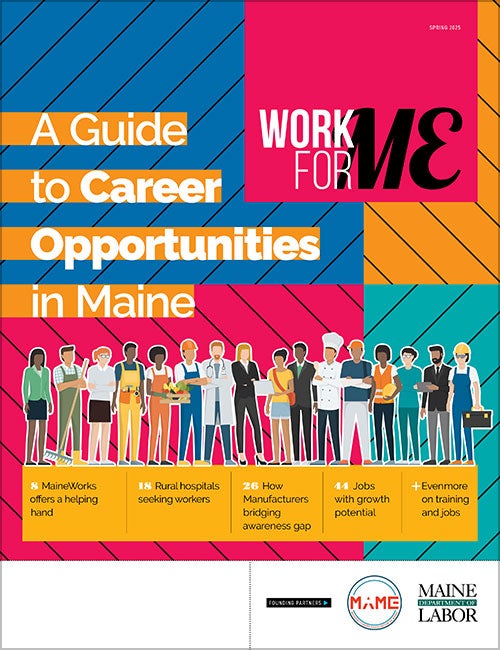Creative thinking | A conversation with Rand Ardell, principal of Simmons Ardell Design in Portland
Founded: January 2008
Employees: Ardell and Jessica Simmons
Start-up costs: $10,000-$15,000
Projected revenue, year one: $175,000
Projected revenue, year two: $200,000
Contact: 221-3121
One Union Wharf, Portland 04101
www.simmonsardell.com
So what do you do at Simmons Ardell Design?
We describe ourselves as a design and communications company. In terms of the types of services that we offer, it typically starts with brand strategy and planning sort of at the outset of the client relationship, and then the services that typically flow from that include anything from identity work, which is companies that need new logos or trademarks, that type of thing. We do a lot of marketing collateral and websites, that kind of thing. We do advertising and direct marketing. And then just to round it out we do publication design and packaging design. So one of the main ways that we’re a little bit different from an ad agency is that media buying is not a very critical aspect of our business model. You know, in the sense of buying media for television spots and radio spots and that kind of thing.
How did you and the other principal, Jessica Simmons, come to launch this business?
Well, Jess and I had worked together years ago at a local advertising agency in Portland. We had come from different but complementary backgrounds. Jess comes from a more traditional, pure graphic design background in New York City and I come from more of a pure ad-agency background, originally from Toronto, and we spoke over a number of years about our desire to work together. At some point last year, we realized that if we didn’t stop talking and sort of take the risk and jump in that there was a chance that this might never happen. And so, when it really got going, it was about six months of fairly intensive financial planning. Sort of exploring the market.
How did you finance the launch of the business?
Well, this is not a capital intensive business, you know, we’re really just selling our thinking. So it was primarily just ramping up on hardware and office furnishings and signage and all that kind of stuff.
And where did that money come from?
Self funded.
So what have been your biggest challenges in your first year?
A couple of challenges. Jess and I are also life partners. In the conversations that we had [with entrepreneurs] we found that there are a number of people who are in this situation, where they work together and they live together. So one of the obvious challenges, and we knew this was going to be the case, was work-life separation.
One challenge in this specific business is trying to decide the degree of specialization that you’re going to get into in your business. And in our case it’s how specialized you get, either by the industries that you serve or by the type of marketing design services that you provide. Differentiation is a way to succeed in this business but there are pros and cons, because if you’re too specialized in a certain industry area you become much more vulnerable to downturns in that area.
Has the economic downturn affected your business?
It’s been interesting, knock on wood, the economic issues have not really had an impact on us. The fact is that companies, even in this market, they still need to market their products and services and I think that we’re small enough and, due to our size, we’re an efficient option for a number of companies. And so our type of setup seems to make sense for a lot of our clients. It was a bit nerve-wracking because we kind of made the decision part way through 2007. [That] was really at a point where the bad economic news started spilling out into the press. But we’ve kept our heads down and just focused on doing good work and it’s really come out positively so far during the year.
Where do you see the business going?
At some point we’re going to have to make the financial call as to when it stops making sense to contract with other professionals and start thinking growth as a company. It’s a fairly simple situation right now when you’ve just got two partners, both with 50% interest in this corporate entity, but it adds a level of complexity and, even from a cash flow perspective, once you start adding new employees. So that’s something we’re going to have to address and make decisions about in early 2009.
Interview by Sara Donnelly
New Ventures profiles young businesses, 6-18 months old. Send your suggestions and contact information to editorial@mainebiz.biz.










Comments